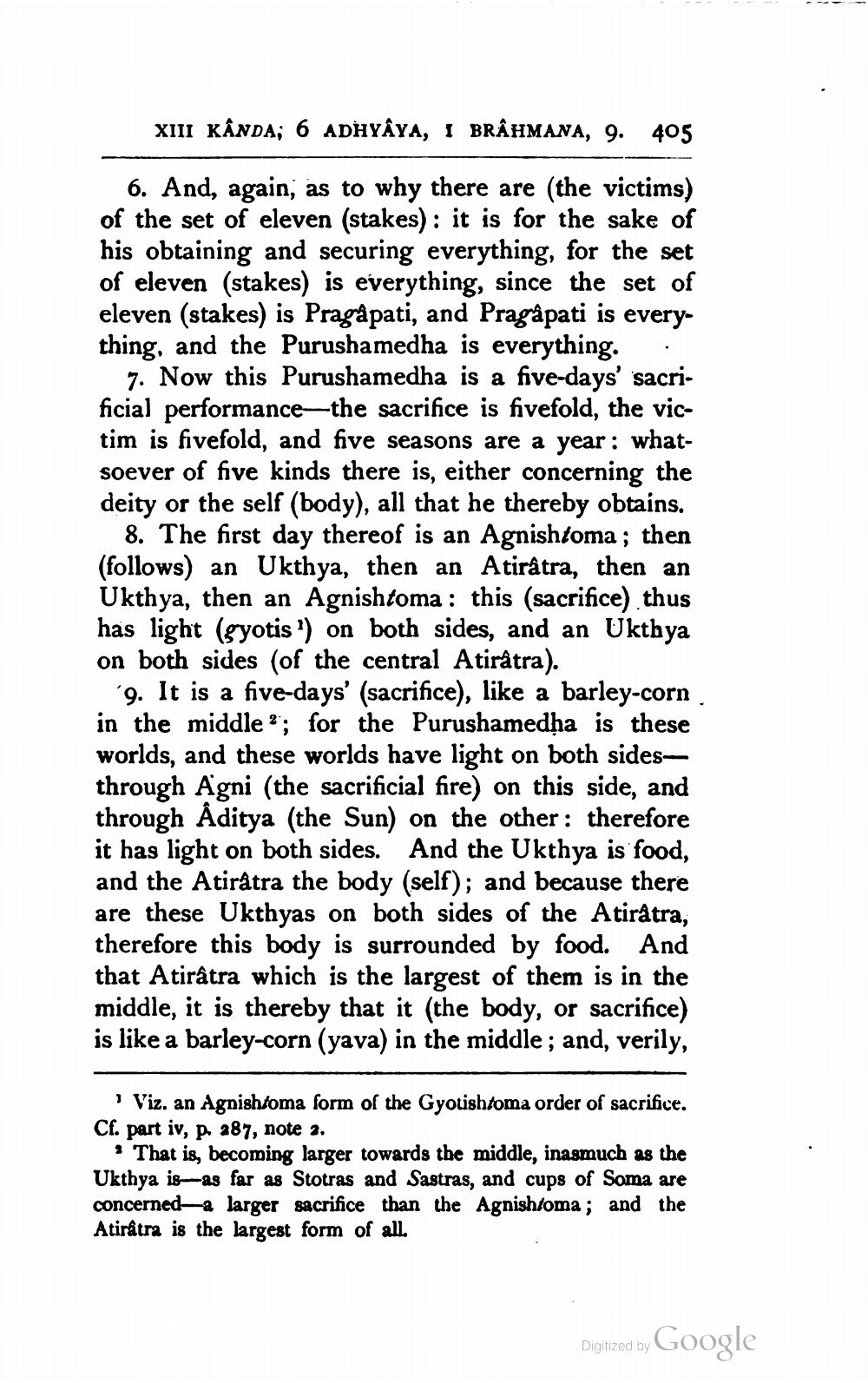________________
XIII KANDA; 6 ADHYAYA, I BRAHMANA, 9. 405
6. And, again, as to why there are (the victims) of the set of eleven (stakes): it is for the sake of his obtaining and securing everything, for the set of eleven (stakes) is everything, since the set of eleven (stakes) is Pragâpati, and Pragâpati is everything, and the Purushamedha is everything.
7. Now this Purushamedha is a five-days' sacrificial performance-the sacrifice is fivefold, the victim is fivefold, and five seasons are a year: whatsoever of five kinds there is, either concerning the deity or the self (body), all that he thereby obtains.
8. The first day thereof is an Agnishtoma; then (follows) an Ukthya, then an Atirâtra, then an Ukthya, then an Agnishtoma: this (sacrifice) thus has light (gyotis) on both sides, and an Ukthya on both sides (of the central Atirâtra).
9. It is a five-days' (sacrifice), like a barley-corn in the middle; for the Purushamedha is these worlds, and these worlds have light on both sidesthrough Agni (the sacrificial fire) on this side, and through Aditya (the Sun) on the other: therefore it has light on both sides. And the Ukthya is food, and the Atirâtra the body (self); and because there are these Ukthyas on both sides of the Atirâtra, therefore this body is surrounded by food. And that Atirâtra which is the largest of them is in the middle, it is thereby that it (the body, or sacrifice) is like a barley-corn (yava) in the middle; and, verily,
'Viz. an Agnish/oma form of the Gyotish/oma order of sacrifice. Cf. part iv, p. 287, note 2.
* That is, becoming larger towards the middle, inasmuch as the Ukthya is as far as Stotras and Sastras, and cups of Soma are concerned a larger sacrifice than the Agnish/oma; and the Atirâtra is the largest form of all.
Digitized by
Google




